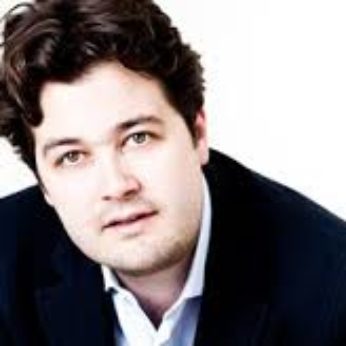Composer: Ludwig van Beethoven (b. 1770 - d. 1827)
Performance date: 03/07/2016
Venue: St. Brendan’s Church
Composition Year: 1801
Duration: 00:34:12
Recording Engineer: Richard McCullough, RTÉ lyric fm
Instrumentation: 2vn, va, vc
Instrumentation Category:String Quartet
Artists:
Kelemen Quartet (Barnabás Kelemen, Gábor Homoki [violins], Katalin Kokas [viola], Dóra Kokas [cello]) -
[quartet]
Lawrence Power -
[viola]

The few people who know about this
marvellous work often refer to it as Opus 18 Number 7. This reflects both its
close proximity in time to the Op.18 quartets – it was written the following
year – and the high standing of the work. There are comparatively few two-viola
string quintets in the repertoire, but this medium actually occupied quite a
large role in chamber music performance on account of numerous arrangements of
other works. Even before the publication of Op.29, Beethoven appeared to have
three quintets to his name. He had arranged his Wind Octet as a string quintet
and published it as Op.4. Both his Septet and First Symphony had been issued in
unauthorised arrangements about which he publicly protested. Hoffmeister was
the offending publisher of the unauthorised version of the Septet, which led
the irate composer to announce that a new
original quintet of my composition in C major Op.29 will shortly appear from
Breitkopf and Härtel in
This happened again in 1817 when he was so
infuriated by another unauthorised arrangement, this time of his C minor Piano
Trio Op.1/3 that he did one himself and published it as Op.104. For those of
you of a literary bent, this arrangement plays a starring role in Vikram Seth’s
novel about a string quartet An Equal
Music.
Beethoven uses the extra viola to give a
great feeling of spaciousness in the work. This is immediately apparent from
the broad, flowing melody of the opening bars. An important innovation is the
remote key of A major that he uses for the lyrical second subject. But it is
the opening motif that dominates the movement, sneaking back in with its
hypnotic turn of phrase, seemingly at every opportunity. The elaborately
decorated Adagio is equally expansive
and after meandering quite gently for most of its course, suddenly takes on a
new seriousness just when you think he has said all he wants to say. The Scherzo and Trio are built with the same large-scale thematic material, though the
movement is by far the shortest.
The Finale is a dramatic tour de force that
echoes Haydn’s joke last movements. Beethoven begins with a violent storm with tremolando lower parts, complete with
flashes of lightning from a fiery first violin. The rhythmic complexity of the
development adds to the drama until just as we expect the recapitulation, he
punctures the atmosphere with a startling episode of an exaggerated four-square
Andante con moto e scherzoso. As this
fades away the storm resumes finally to be banished by the same tongue-in-cheek
episode to even greater comic effect.
Copyright © 2025 West Cork Music. All rights reserved.
Designed and developed by Matrix Internet